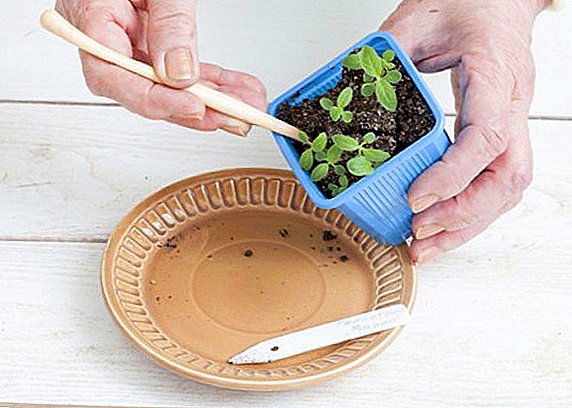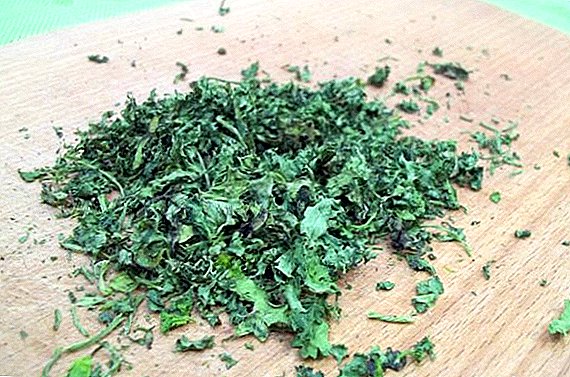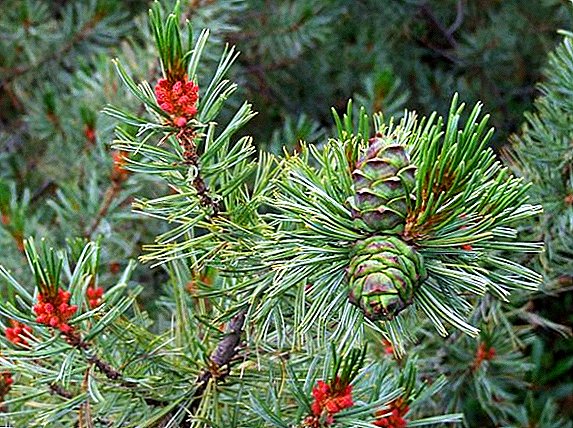 We used to think that the "hives" are small houses for bees built by caring beekeepers.
We used to think that the "hives" are small houses for bees built by caring beekeepers.
However, in nature, these hardworking insects build their own hives in the hollows of trees, crevices and branches.
A person has nothing to do with the formation of such a hive.
Wild hive
Wild hive - This is the natural habitat of wild bees. They often build it themselves and locate their house in trees, crevices, caves and even underground. The main factors when choosing a place to live are protected from the wind, sun, spaciousness and proximity of the reservoir. The hive is protected from cold air and high humidity, as its upper part is treated with propolis. The hive in the hollow is called "bort".
Did you know? In beekeeping, smoke is used to pacify bees. When smoke appears, individuals have an instinct for self-preservation, and they stock up on honey, paying no attention to anything.
Description
This hive has a very simple structure. Him the basis is honeycomb. Of these, in fact, consists of a hive. The structure of the honeycomb begins with the lower tier and moves up. The lower part is for ventilation. If the hole in the nest is too large, then the bees close it up, and if it is too small, they crack it.
As appears
Before the start of breeding, bees that scout the area are looking for a place to live. When they find suitable options, the swarm takes off and chooses the most suitable of them. Honey miners equip their home in a hollow that fits them in size. With the help of propolis, they close up the holes and cracks in the hollow.
Next, insects expose a guard near the entrance and begin to wear honey, while others make honeycombs. It happens that they bring too much honey and because of this they fly to another place, as they do not have enough space for the brood. On trees, bee nests are placed so that they are turned to the south. The height at which the nest is made should be approximately the same as that of a five-story building.
Did you know? To fix honey honeycombs in the hive, the bees emit wax, which is used as a building material.
Some insects of this species prefer to build wild hives in the ground. It looks like an underground city with lots of tunnels and passages. These moves are equipped so that they do not crumble. This is a complex and painstaking work, during which insects use their saliva and mix it with the ground. With this mixture they strengthen the walls of their homes. 
Life cycle features
Bees are divided into three main types: queen bee, working bees and drones.
- The uterus is responsible for reproduction. At some point, it leaves the hive and mates, then comes back and lays eggs until the very end of life.
- Worker bees do all the basic work. Their duties are: harvesting honey, feeding, maintaining order in the hive, guarding and, of course, the structure of honeycombs.
- Drones are engaged in the search for queens for mating. Before lunch, they fly away to where many drones accumulate, and return closer to the dark time of day.
Important! Responsibilities of worker bees are distributed depending on how old they are.
Is it possible to entice bees
You can lure them away, but if you nevertheless decided to tame the wild honey earners, you should understand that this task is not an easy one. Let's talk about how to transplant bees from a hollow into a hive and what needs to be done to do this. 
Whether or not
Of course, you can tame them. However, for this you need some knowledge. While you transplant them, you may be subject to various injuries (some hives may be high) and at risk of being bitten.
Read also about different types of beehives: Dadana, Varre, multicase, "Boa", Alpine, nucleus, pavilion ("Berendey").
How to get to the nest
If you do not know in advance where the board is located, the task of finding it is much more complicated. The main indicator that somewhere in the forest there is a hive in the hollow of a tree is presence of a reservoir. If you walk along a river or a lake, you can see a cluster of insects near the water.
Important! If you follow the bees near the water, then in the direction of their movement can find their home.
Cut honeycombs
It is necessary to get honeycombs only when there is no one left in the hive. For this, insects need to be smoked from there. To make this process go faster, tap the tree at the bottom and gradually move up. 
Relocation process
Best deal with it early springy. At this moment, the brood from the honey miners is small, and when they are relocated it is very easy to lose it. Remove the honeycomb from the wild hive and move it to where your apiary will be located.
If they are on top, then you will need a trap designed for such cases. This is a box in which there are from 4 frames. To bees flew there, use the frame with honey. Next, you need to raise the box with ropes to a height and leave it there. Checking the trap is worth every 6-9 days. If the bait has worked and the bees have settled in your trap, gently lower the box to the ground, close the valve and take it to where you are going to keep the bees in the future.
Hide a tree
If a new habitat of these insects is located less than 5 km away from the tree in which there was a hollow, then the insects can come back. To prevent this from happening, close the hollow with something.
Honey miners build their own houses, and it is very difficult to move them from there. However, if you follow all the rules that are designed for this case, moving will not be difficult.












